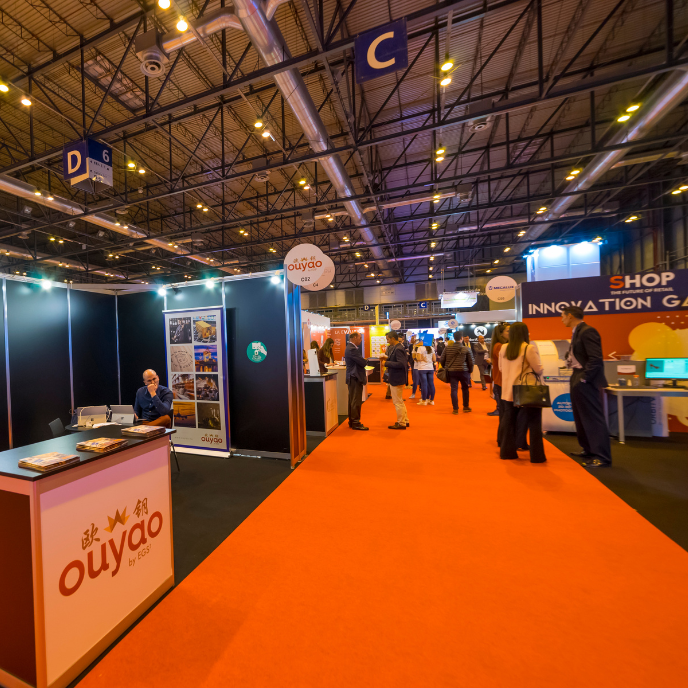How to Convert More Prospects into Sales

Whether or not you were accustomed to working from home prior to the pandemic, when it became our new normal, behaviours began to shift. Our consumer expectations, fueled by seamless customer experiences delivered by the likes of Amazon and Netflix, encroached on what we expect from a business transaction. Add on distractions from kids, pets, spouses and partners, and the result is 5 second attention spans – and demand for self-serve, highly intuitive, hyper-personalized transactions.
Customers expect – and will pay more for – excellent customer service 24/7, regardless the size of their job. More and more expect an app/portal where they can check the status of their job, place orders and track delivery or past orders. They’re four times more likely to jump to the competition when a problem is service-related instead of product or price-related – or if they feel poorly treated.
Providing a quality and uniform omnichannel experience embraces print to seamlessly blend the offline physical world with our online digital one by increasing brand awareness, loyalty, and wallet-share. Interactive print solutions, like QR codes, Artificial Intelligence (AI), Augmented Reality (AR) and Virtual Reality (VR), help achieve this by triggering the sense of touch, smell, sight and sound – as customers discover your products and services in exciting new ways. Not only do these technologies literally bring print to life – they deliver long-lasting, memorable and sensory experiences that drive conversion rates.
Whereas AI is oriented around data, others are designed to deliver an immersive customer experience. When the smartphone boom occurred circa 2009, AR began to take off. Now, many companies in many industries are either testing or using AR systems, including Boeing, DHL, Ikea, and Lego to immerse customers in an interactive experience that pops off the printed page and facilitates the buying decision. Print providers have also begun rolling out VR products, such as Ricoh’s THETA, which allows you to capture a 360-degree image to generate a VR experience.
According to Dragana Pavlovic, Senior Vice President, Global Development Group, Xerox, print providers are discovering that the most profitable new revenue streams to come from having artificial intelligence stem from Reactive and Limited Memory AI technologies. Technologies that learn by being reactive and can make decisions based on all available data. Bridging analogue and digital worlds captures buyer attention for a longer period of time, eases call centre and customer service workloads, and nets rich, valuable data used to deliver a hyper-personalized experience.
To drive customers to pURLs, URLs, videos, featured promos and more – without having to navigate through website menus and submenus – QR codes are gaining popularity. Adding elements like AR and VR helps keep them there – engaging with your content and your brand.
QR codes were first developed in 1994 by Denso to streamline operations in Japan’s automotive industry. They weren’t introduced in the US until 2010, when the first QR scanner app was released for mobile devices. In 2015 QR codes were revived by messaging app, Snapchat to add friends, as well as unlock filters, lenses and more. Unlike the first QR codes, which were platform dependent, today you can simply point your phone at one for it to launch – another reason for their current surge in popularity.
SmartLabel, created by the Trading Partner Alliance (TPA), addresses supply chain efficiency issues, the application of information technology, the adoption of environmentally-friendly business practices and other issues of importance to consumers. It provides detailed information about food, beverages, over-the-counter products and more – using QR codes right on the packaging – that can be easily scanned by any smartphone, computer, or tablet. In the wake of Coronavirus, restaurants have been embracing QR technology to provide touchless menus as they re-open for dine-in patrons.
Once you pinpoint who you help and how, you can speed up the prospect to customer journey with the power of Artificial Intelligence, Virtual Reality, Augmented Reality and Print. Whether it’s scanning a QR code on a business card to upload directly into your CRM, or creating virtual experiences with printed direct mail, catalogues, magazines – even floor and wall graphics – these interactive solutions are bridging both physical and digital worlds to reshape the customer experience – whether it’s in the kitchen or the boardroom.
Get help stretching your marketing dollars
#Print #Printers #Marketing #Tips #Strategy #Revenue #Sales #B2B #InteractivePrint #AugementedReality #QRCodes #VirtualReality #Phygital #CustomerExperience #CX #ArtificalIntelligence #omnichannel #technology #COVID #virtualexperience #digital
Portions of this article were published with permission in Graphic Arts Magazine.
Image credit: Pixabay



